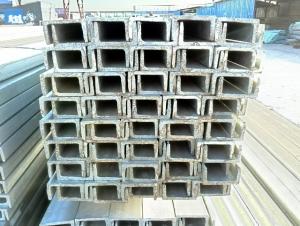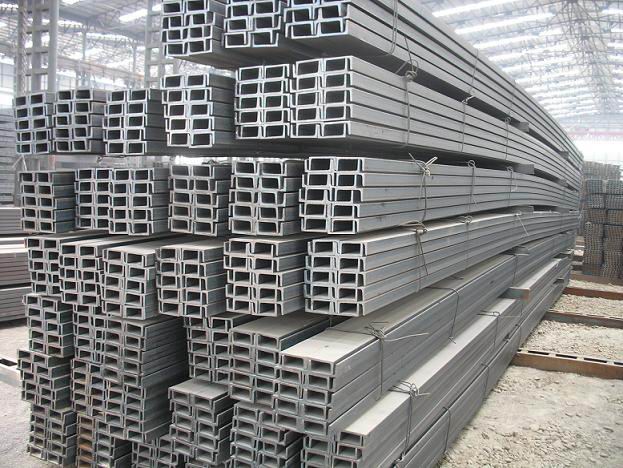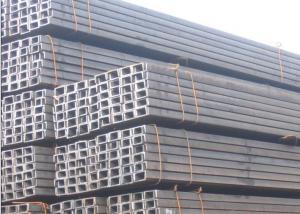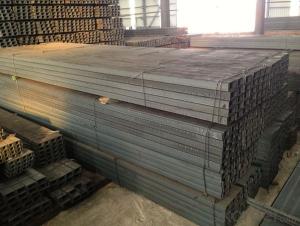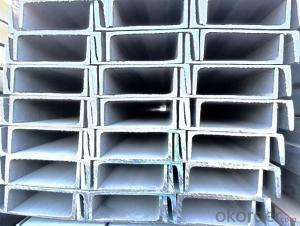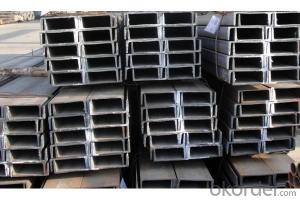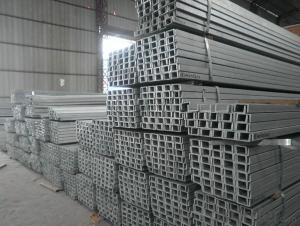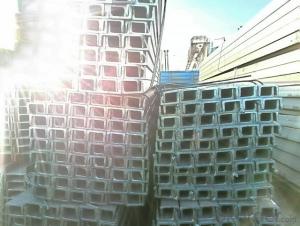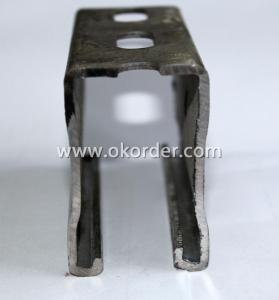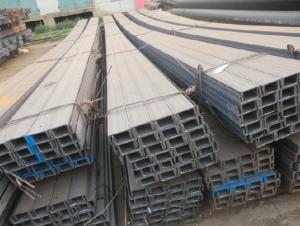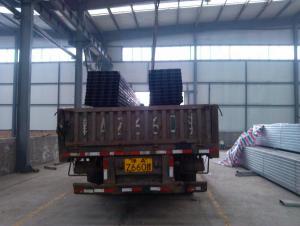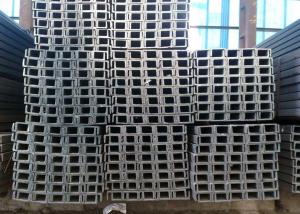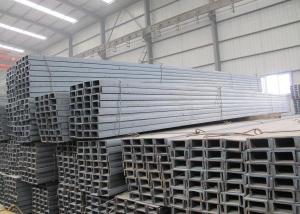JIS U Channels Beams for Structures Buildings Making
- Loading Port:
- Tianjin
- Payment Terms:
- TT OR LC
- Min Order Qty:
- 25 m.t
- Supply Capability:
- 10000 m.t/month
OKorder Service Pledge
OKorder Financial Service
You Might Also Like
Product Description:
| Minimum Order Quantity: | 25MT | Unit: | m.t. | Loading Port: | Xingang Port |
| Supply Ability: | 120000TON/Year | Payment Terms: | TT or LC |
Product Applications:
Japanese Standard U-channels are ideal for structural applications and are widely used in the construction of buildings and bridges, and the manufacturing, petrochemical, and transportation industries.
Product Advantages:
OKorder's Japanese Standard U-channels are durable, strong, and resist corrosion.
Main Product Features:
· Premium quality
· Prompt delivery & seaworthy packing (30 days after receiving deposit)
· Corrosion resistance
· Can be recycled and reused
· Mill test certification
· Professional Service
· Competitive pricing
Product Specifications:
Manufacture: Hot rolled
Grade: Q195 – 235
Certificates: ISO, SGS, BV, CIQ
Length: 6m – 12m, as per customer request
Packaging: Export packing, nude packing, bundled
1. We are definitely speciallizing in manufacturing and supplying channel steel as per japanese standard, which is characterised with high mechanical strength and competitive prices.
Original Place | Tangshan, China | Brand Name | UINDA |
Standard | JIS G3192 : 1990 | ||
Material Grade | SS490 | ||
Sizes | 50mm to 200mm | ||
Sales Volume/Year | 3000MT | ||
Destination Area | Middle East, Africa, Southeast Asia | ||
2. The sections in details are as followings in the table-1
JIS U CHANNEL | Standard | Sectional | Dimension |
| Mass: |
| (mm) | (mm) | (mm) | (mm) |
|
50x25 | 50 | 25 | 3.0 | 6.00 | 2.37 |
75X40 | 75 | 40 | 3.8 | 7.00 | 5.30 |
75X40 | 75 | 40 | 4.0 | 7.00 | 5.60 |
75X40 | 75 | 40 | 4.5 | 7.00 | 5.85 |
75X40 | 75 | 40 | 5.0 | 7.00 | 6.92 |
|
|
|
|
|
|
100X50 | 100 | 50 | 3.8 | 6.00 | 7.30 |
100X50 | 100 | 50 | 4.2 | 6.00 | 8.03 |
100X50 | 100 | 50 | 4.5 | 7.50 | 8.97 |
100X50 | 100 | 50 | 5.0 | 7.50 | 9.36 |
|
|
|
|
|
|
125X65 | 125 | 65 | 5.2 | 6.80 | 11.66 |
125X65 | 125 | 65 | 5.3 | 6.80 | 12.17 |
125X65 | 125 | 65 | 5.5 | 8.00 | 12.91 |
125X65 | 125 | 65 | 6.0 | 8.00 | 13.40 |
|
|
|
|
|
|
150x75 | 150 | 75 | 5.5 | 7.30 | 14.66 |
150x75 | 150 | 75 | 5.7 | 10.00 | 16.71 |
150x75 | 150 | 75 | 6.0 | 10.00 | 17.90 |
150x75 | 150 | 75 | 6.5 | 10.00 | 18.60 |
150x75 | 150 | 75 | 6.5 | 10.00 | 24.00 |
|
|
|
|
|
|
200X80 | 200 | 80 | 7.5 | 11.00 | 24.60 |
Table-1
3. The mechanical property of JIS U Channel Steel in the table-2:
Grade | Yield Strength,N/mm² | Extension Strength N/mm² | |||
Thickness of Steel,mm | |||||
≦16 | >16-≦40 | >40-≦100 | >100 | ||
SS490 | ≧285 | ≧275 | ≧255 | ≧245 | 490-610 |
Table-2
4. The chemical composition of JIS U Channel Steel as per SS490 in the table-3
Grade | Element(%) | |||
C | Mn | P | S | |
SS490 | - | - | ≦0.050 | ≦0.050 |
Table-3
FAQ:
Q1: Why buy Materials & Equipment from OKorder.com?
A1: All products offered byOKorder.com are carefully selected from China's most reliable manufacturing enterprises. Through its ISO certifications, OKorder.com adheres to the highest standards and a commitment to supply chain safety and customer satisfaction.
Q2: How do we guarantee the quality of our products?
A2: We have established an advanced quality management system which conducts strict quality tests at every step, from raw materials to the final product. At the same time, we provide extensive follow-up service assurances as required.
Q3: The products are invoicing on theoritical weight or on actual weight?
A3: We can do it in both manners, according to the customers' request.
Images:
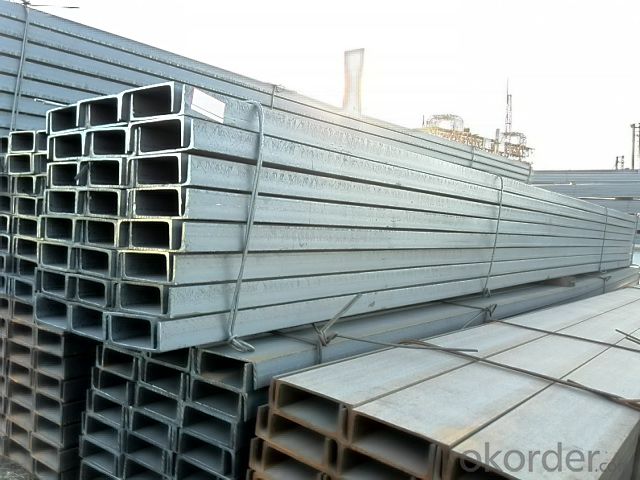
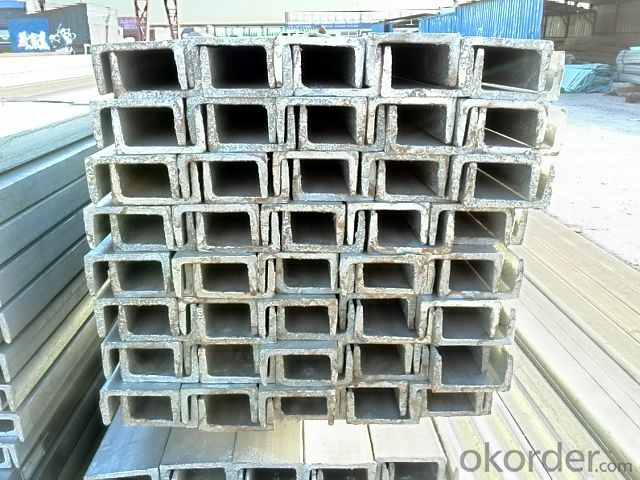
- Q: What are the different methods for surface preparation of steel channels?
- Some common methods for surface preparation of steel channels include abrasive blasting, chemical cleaning, and mechanical cleaning. Abrasive blasting involves using high-pressure air or water to propel abrasive materials against the surface of the steel channels, removing rust, scale, and other contaminants. Chemical cleaning involves using chemicals or acids to dissolve and remove rust or other surface contaminants. Mechanical cleaning involves using wire brushes, sanding, or grinding tools to physically remove rust and other surface imperfections.
- Q: Are steel channels suitable for use in automotive applications?
- Yes, steel channels are suitable for use in automotive applications. Steel channels offer high strength and durability, making them ideal for use in various automotive components. They can be used in the construction of frames, chassis, suspension systems, and other structural parts. Steel channels also provide excellent resistance to impact and fatigue, ensuring the safety and longevity of automotive vehicles. Additionally, steel channels can be easily fabricated and welded, allowing for efficient manufacturing processes. Overall, steel channels offer the necessary mechanical properties and reliability required for automotive applications.
- Q: What's the difference between channel type 25a#, 25b# and 25c#?
- Channel steel is a strip of steel with a cross section. The specifications of the method, such as 120*53*5, mean waist height of 120 mm, leg width of 53 mm channel, waist thickness of 5 mm channel, or called 12# channel. The same height of the channel, if there are several different leg width and waist thickness, also need to add a, B, C on the right side of the model, such as 25a#, 25b#, 25c# and so on. Channel steel is divided into ordinary channel steel and light channel steel. Standard Specification for hot-rolled plain channel steel is 5-40#. Specifications for hot rolled flexible channel steel supplied by supply and demand agreement are 6.5-30#. Channel steel is mainly used in building structures, vehicle manufacturing and other industrial structures, and channel steel is often used in conjunction with i-beam.
- Q: Can steel channels be used for creating signage or display structures?
- Yes, steel channels can be used for creating signage or display structures. Steel channels are versatile and durable, making them suitable for various applications including signage and display structures. Their strength and rigidity allow for the creation of sturdy structures that can withstand outdoor elements and heavy loads. Additionally, steel channels can be easily customized and fabricated into different shapes and sizes to meet specific design requirements. This makes them an ideal choice for creating unique and eye-catching signage or display structures.
- Q: How are steel channels used in construction?
- Steel channels are widely used in construction for various purposes. One of the primary uses of steel channels is in structural applications, where they are used to provide support and stability to a building's framework. They are often used as beams or columns to bear heavy loads and resist bending or twisting forces. Steel channels are also commonly used for framing and framing accessories, such as door and window frames. They provide a rigid and durable framework for installing doors, windows, and other fixtures. In addition, steel channels are utilized in the construction of ceilings, walls, and partitions. They can be used as support elements for attaching drywall or other finishing materials, providing strength and stability to the overall structure. Furthermore, steel channels are employed in the construction of infrastructure projects such as bridges and highways. They serve as structural components that can withstand heavy loads and provide the necessary strength and durability required for these types of constructions. Overall, steel channels are indispensable in construction due to their strength, versatility, and durability. They play a crucial role in ensuring the stability and structural integrity of buildings, making them a vital component in the construction industry.
- Q: Small Huxing, suitable for what modeling ceiling, channel across 4.8 meters, 60cm file, middle angle steel, 60cm first gear, what kind of modeling ceiling?
- If the storey is still very high, you can directly consider the normal shape ceiling, such as: back ceiling, arc shaped ceiling, two ceiling, etc..
- Q: What are the different methods for protecting steel channels from corrosion?
- There are several methods for protecting steel channels from corrosion. One common approach is applying a protective coating, such as paint or powder coating, which creates a barrier between the steel and the environment. Another method is galvanizing, where a layer of zinc is applied to the steel surface through hot-dip or electroplating, providing corrosion resistance. Additionally, using stainless steel channels, which contain a high percentage of chromium, can offer excellent corrosion resistance. Regular maintenance, such as cleaning and removing accumulated debris or moisture, can also help prevent corrosion on steel channels.
- Q: What are the different types of steel channel accessories?
- There are several different types of steel channel accessories that are commonly used in various industries and construction projects. Some of the most common types include: 1. Brackets: Steel channel brackets are used to provide additional support and stability to the structure. They are typically used in combination with steel channels to secure them in place and prevent any movement or sagging. 2. Connectors: Steel channel connectors are used to join two or more steel channels together. They come in various designs, such as corner connectors or straight connectors, and are used to create a strong and secure connection between the channels. 3. End caps: Steel channel end caps are used to cover the exposed ends of steel channels. They provide a finished look to the structure and also help protect the channel from any damage or corrosion. 4. Mounting hardware: Steel channel mounting hardware includes various types of bolts, screws, and brackets that are used to attach the steel channels to walls, floors, or other surfaces. These accessories ensure a secure and stable installation. 5. Clips and clamps: Steel channel clips and clamps are used to secure cables, pipes, or other equipment to the steel channels. They provide a reliable and organized way to manage and secure various components within a structure. 6. Hangers: Steel channel hangers are used to suspend or hang different equipment, pipes, or cables from the steel channels. They are commonly used in HVAC systems, electrical installations, and plumbing applications to provide support and prevent sagging. 7. Slotted channels: Slotted steel channels are designed with slots or holes along the length of the channel. These slots allow for easy and adjustable mounting of various accessories, such as brackets, clamps, or hangers, without the need for additional drilling or modifications. Overall, these steel channel accessories play a crucial role in enhancing the functionality, stability, and appearance of steel channel structures in a wide range of applications.
- Q: How do steel channels perform under seismic loads?
- Steel channels can perform very well under seismic loads due to their inherent properties and design characteristics. Steel channels are typically used as structural elements in buildings and bridges to provide support and stability. When subjected to seismic loads, steel channels exhibit excellent strength and ductility, allowing them to withstand the dynamic forces generated by an earthquake. The high tensile strength of steel ensures that the channels can resist bending and distortion, while their ductility allows them to absorb and dissipate energy during seismic events. Moreover, steel channels can be designed and reinforced to enhance their seismic performance. Engineers can incorporate additional reinforcement, such as diagonal bracing or moment connections, to further enhance the channels' resistance to seismic forces. These reinforcements help distribute the forces more evenly throughout the structure, reducing the likelihood of localized damage or failure. In addition to their strength and ductility, steel channels also offer other advantages in seismic design. They are lightweight compared to other building materials, which reduces the overall mass of the structure and, consequently, the seismic forces acting on it. Steel channels can also be easily fabricated and installed, allowing for more efficient construction and potentially shorter downtime after an earthquake. Overall, steel channels are an excellent choice for seismic-resistant construction. Their inherent strength, ductility, and design flexibility make them highly capable of withstanding seismic loads and ensuring the safety and stability of structures in earthquake-prone areas.
- Q: Span 6 meters, simple beam support center force 380Kg, need to choose how large channel steel, how to calculate?
- The bending moment M=3800/2*3N.m, the allowable stress takes delta = 200MPa, the modulus of bending section is obtained by W=M/ Delta, and the channel parameter is checked (GBT 706-2008, including the W value of channel steel of various specifications), and the suitable channel type is obtained.
Send your message to us
JIS U Channels Beams for Structures Buildings Making
- Loading Port:
- Tianjin
- Payment Terms:
- TT OR LC
- Min Order Qty:
- 25 m.t
- Supply Capability:
- 10000 m.t/month
OKorder Service Pledge
OKorder Financial Service
Similar products
Hot products
Hot Searches
Related keywords
